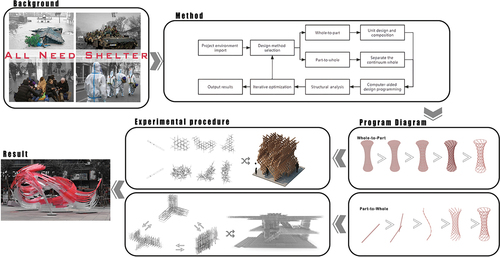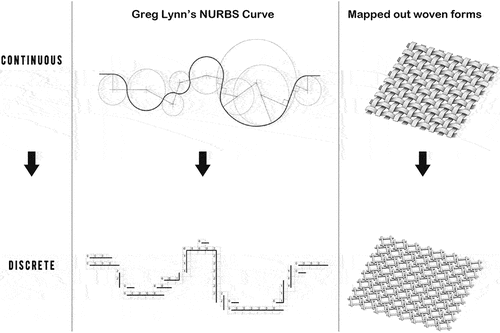Figures & data

Figure 2. The transformation from continuous to discrete by Greg Lynn’s NURBS curve shows the transition of continuous weaving to unit weaving.

Table 1. Comparing the properties of the unit and intertwine weave forms.
Register now or learn more
Open access

Figure 2. The transformation from continuous to discrete by Greg Lynn’s NURBS curve shows the transition of continuous weaving to unit weaving.

Table 1. Comparing the properties of the unit and intertwine weave forms.
People also read lists articles that other readers of this article have read.
Recommended articles lists articles that we recommend and is powered by our AI driven recommendation engine.
Cited by lists all citing articles based on Crossref citations.
Articles with the Crossref icon will open in a new tab.